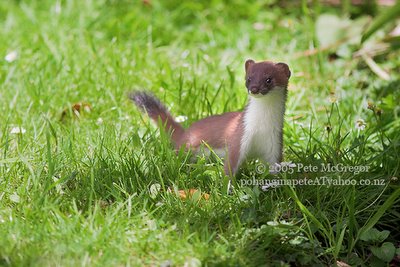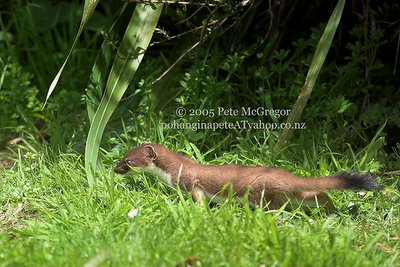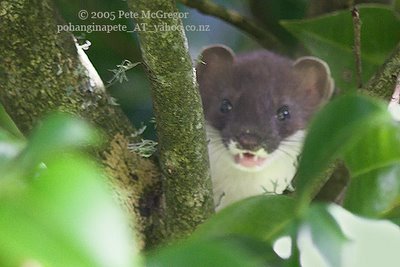 diverging, sometimes splitting, then reforming. If my memory’s accurate (a dubious assertion) I managed at one point to direct the discussion to a less lighthearted, more serious exploration, not because I wanted to depress it but purely because these were people whose thoughts I value—I wanted the the buzz, the energy of hearing intelligent, considered viewpoints. It’s one of the joys of having friends like these: people from different cultural backgrounds—on this Christmas day, from Germany, France, the UK, and Aotearoa. People who’ve seen, collectively, most of the world; from Antarctica to Zimbabwe.
diverging, sometimes splitting, then reforming. If my memory’s accurate (a dubious assertion) I managed at one point to direct the discussion to a less lighthearted, more serious exploration, not because I wanted to depress it but purely because these were people whose thoughts I value—I wanted the the buzz, the energy of hearing intelligent, considered viewpoints. It’s one of the joys of having friends like these: people from different cultural backgrounds—on this Christmas day, from Germany, France, the UK, and Aotearoa. People who’ve seen, collectively, most of the world; from Antarctica to Zimbabwe. At my end of the table we found ourselves discussing altruism and whether it truly exists; whether you ever do anything you don’t believe (at least subconsciously) you’ll benefit from. Will argued it is indeed real.
“Sometimes you just do things,” he said. “You don’t think about whether you’re going to get something out of it.
Dianne agreed. “If you see a child standing in the middle of the road, you don’t think about it, you just rush out and save it.”
True. But what prompts you to do that? Why don’t you think about it? I sensed the discussion was about to veer towards that impossible argument about free will, determinism, and whether—or how—you can reconcile the two, so I coaxed it back to whatever was being discussed at the other end of the table. I don’t remember what it was about at that stage, but it soon focused on dessert and whether to watch Dr Strangelove. We settled for both.
The evening finally finished about half past one in the morning. Dianne had left earlier; Stephen drove off to work (!) to change a tape for a backup that takes three days; and the rest of us retired.
I woke when the room began to lighten, recognised I’d only had about four hours’ sleep, and went back to sleep.  I repeated this several times, at one stage hearing blackbirds scolding nearby, clearly agitated. I wondered vaguely whether they were mobbing the stoat Deb and Will had seen recently, but I was too tired to get up and look. I dropped off to sleep again, eventually rising some time after eight to find Deb and Will had been up for an hour or two.
I repeated this several times, at one stage hearing blackbirds scolding nearby, clearly agitated. I wondered vaguely whether they were mobbing the stoat Deb and Will had seen recently, but I was too tired to get up and look. I dropped off to sleep again, eventually rising some time after eight to find Deb and Will had been up for an hour or two.
We spent the rest of the morning and much of the afternoon eating, relaxing, talking, and photographing: baby blackbirds, silvereyes, Deb’s flowers, but mostly each other. Will, Arne, and Yvan decided to play petanque, so I joined them, mostly so none would feel bad about being the worst player. I succeeded admirably until I started getting the hang of it and occasionally—and briefly—lost my worst player status. I even won one round, then immediately came last in the next.
After 20 minutes or so of being thrashed at petanque, I became aware that the blackbirds were scolding again. I excused myself from the game, collected my camera and the big lens and edged carefully around to the front of the house where the birds were chink-chink-chink-ing. A thrush flew up from the ground to the top of the netting fence separating neatly mowed lawn from long grass; other birds harangued from nearby shrubs and small trees. I moved forward, slowly and quietly; raised the camera to look at the thrush through the viewfinder. As I did so, I glimpsed something flicker in the grass beneath the camellia. Something brown; another thrush, I thought. Then, no: the arc of a small, long body briefly in sunlight then gone into shadow.
Stoat.
While it was out of sight, I moved quickly and quietly to the fence and raised the camera, readying it. Nothing for a moment, then  I saw the stoat, apparently unperturbed, looping over and through the grass. I fired a quick shot, but the stoat was mostly obscured. It flowed through the grass and up among low camellia branches. I managed another photo (blurred, as it turned out) before it dropped back to the ground and ran underneath a shrub in the corner. Easing closer, I waited for it to reappear. The birds were still agitated and calling. I kept hoping the stoat was still under the shrub and hadn’t vanished into the rank paddock on the other side. I’d almost managed a photo, but “almost” is almost the same as “not”. Frustrating. Keyed up, waiting, charged; I’d taken on some of the intensity of the small predator I was hunting.
I saw the stoat, apparently unperturbed, looping over and through the grass. I fired a quick shot, but the stoat was mostly obscured. It flowed through the grass and up among low camellia branches. I managed another photo (blurred, as it turned out) before it dropped back to the ground and ran underneath a shrub in the corner. Easing closer, I waited for it to reappear. The birds were still agitated and calling. I kept hoping the stoat was still under the shrub and hadn’t vanished into the rank paddock on the other side. I’d almost managed a photo, but “almost” is almost the same as “not”. Frustrating. Keyed up, waiting, charged; I’d taken on some of the intensity of the small predator I was hunting.
When it emerged, it ran across the lawn in front of the harakeke. I snapped a photo; the stoat turned and ran slightly towards me, then stopped. I managed three more photos before it returned to the longer grass on the far side of the fence.  It climbed a tree, snaking up into the canopy. There, it peered out, looking directly at me. I could see only its head. In the shade, there was too little light for photos, although I took several, hoping I might be lucky. The stoat looked around and opened its mouth; a gleam of tiny, white teeth; prominent canines. Who knows what the gesture meant? To me, it looked like a yawn, as if I were being told to hurry up and take my damn photos, it didn’t have all day to hang around being photographed. But it could have been defiance—stop harassing me, I have birds to kill—or perhaps it was uncertainty, indecision? I’ll never know; I can only speculate and wonder. What’s important is that, for a moment, we entered each other’s lives. We existed in each other’s consciousness. It may have been a day late, but as a Christmas present it takes some beating.
It climbed a tree, snaking up into the canopy. There, it peered out, looking directly at me. I could see only its head. In the shade, there was too little light for photos, although I took several, hoping I might be lucky. The stoat looked around and opened its mouth; a gleam of tiny, white teeth; prominent canines. Who knows what the gesture meant? To me, it looked like a yawn, as if I were being told to hurry up and take my damn photos, it didn’t have all day to hang around being photographed. But it could have been defiance—stop harassing me, I have birds to kill—or perhaps it was uncertainty, indecision? I’ll never know; I can only speculate and wonder. What’s important is that, for a moment, we entered each other’s lives. We existed in each other’s consciousness. It may have been a day late, but as a Christmas present it takes some beating.
Notes:
1. Stoats (Mustela erminea) were introduced into New Zealand in the 19th century to control rabbits. It didn’t work; instead, stoats are now a major threat to New Zealand’s birds. The Department of Conservation claims about 60% of the North Island brown kiwi born are killed by stoats: about 15,000 kiwi chicks per year. That’s a lot of kiwi chicks, especially for a population currently about 70,000 but declining at almost 6% per year. It’s not just kiwi, either—as well as other birds, including kaka, mohua, and whio, stoats also eat invertebrates, including koura (freshwater crayfish) and weta. However, stoats do kill rats and mice, so removing stoats may, under some circumstances, cause rodent populations to increase—bad news for birds, plants, and invertebrates. Unfortunately, we don’t know enough about these sorts of ecological interactions to be able to exploit them for conservation ends.
2. Stoats are considered such a threat to New Zealand’s indigenous biodiversity that in 1999 the Government committed $NZ6.6 million over 5 years to stoat research.
3. Sorry about the copyright statement on the photos, but I need to take care with these photos, as I hope they’ll supplement my microscopic income ("income" is actually a misnomer). If you want a larger, clean photo, send me an email.
Photo 1: “...the stoat turned and ran slightly towards me, then stopped.”
Photo 2: “... it ran across the lawn in front of the harakeke.”
Photo 3: “... there was too little light for photos.” In fact, I was able to salvage this: not exactly a world-beater, but you get the impression.
Photo 4: The previous evening (Christmas day), this hare (Lepus europaeus) was feeding in the paddock next to Deb’s house, seemingly not bothered by the music and activity. However, when I tried to stalk closer, it loped off, only to return later. I didn’t disturb it a second time; I like hares, and harassing this one—especially on Christmas day—seemed like a mean thing to do.
Photos and words © 2005 Pete McGregor
6 comments:
Fantastic stoat story. Great photographs of that wild, slinky little creature. There is a moment when photographing an animal like that it looks back at you, and you know that you are being seen by something wild. You capture that moment.
Thanks RD. I know stoats are terrible pests; devastating for our native wildlife; but seeing one is always a highlight of my day, and to have an encounter like this... I don't see any inconsistency in recognising that something like a stoat can be a "noxious animal" and beautiful and inspiring. Fortunately, in this location there's no real moral dilemma about whether to try to trap this particular stoat.
"We existed in each other's consciousness." Nice. I live for gifts like that.
I remember a blackbird where I was living years ago. It spent each summer raising several broods of perpetually hungry chicks, and we helped him out with food. Eventually, if we kept very still, he'd take food from our hands. To have contact with a wild animal like that is an experience beyond words.
Hope you're enjoying the snow, Brenda. Happy New Year!
Wow! Great stoat shots Pete. Very hard to get.
Good idea to put the copyright on them - some bastard at LCR might pinch them for their PowerPoint presentation! Haha.
Comfy
Hi Comfy,
Yeah, it was a case of being in the right place, with my awareness tuned to the possibility of seeing a stoat. Don't worry, I'll try my best to sell them to my LR mates... hope they have something left in their budgets... ;^)
Post a Comment